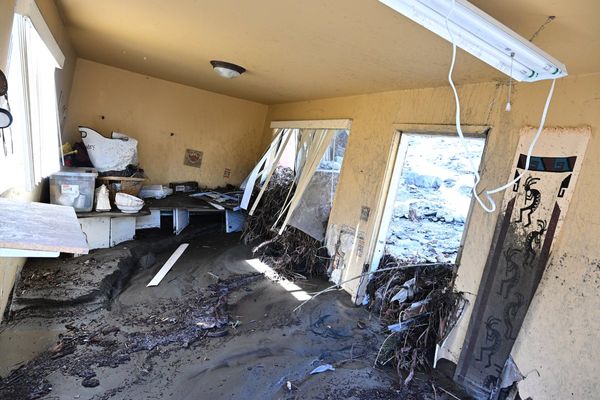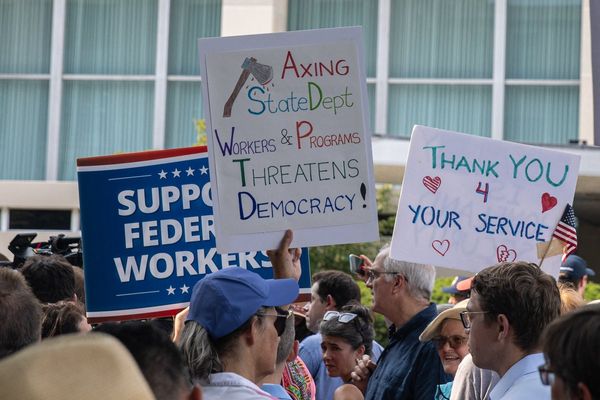
Three months after joining Myanmar’s armed uprising against the military coup — and three weeks before his 24th birthday — Salai Peter lost both of his legs.
Like many of Myanmar’s young resistance fighters, Peter never imagined himself on the front lines of war.
An amateur photographer, musician and sound engineer from the country’s Chin ethnic minority, he is one of the millions who refused to accept a future under military rule and took to the streets in nonviolent protests within weeks of the February 2021 coup.
The military responded by firing into the crowds — killing hundreds in the ensuing months and driving people across the country to take up arms instead. New resistance groups emerged by the dozens, while some existing ethnic armed organisations fighting for self-determination along the country’s borders threw their weight behind the national uprising.
Peter left his home in the city of Hakha in June 2021, travelling into the mountains to enlist in the Chinland Defence Forces (CDF), at the time a rising force in Myanmar’s northwest.
Three months later, he was deployed to monitor the military’s movements by drone camera in the moments leading up to an ambush on a military camp near the border with India. Some 200 anti-coup fighters overran the camp, killing 12 soldiers and seizing their weapons, but the military bombed the site in retaliation for the attack, and Peter was among the eight people who were injured.

Now at a rehabilitation centre, he spends his time playing the ukulele and learning to walk with prosthetic legs so he can return to his camp. “Before this revolution is finished, I will go back,” he said. “This injury just made my willpower stronger.”
Territorial gains
Peter is among the more than 100,000 people in Myanmar who are risking their lives to fight the coup and taking on a military that continues to be supplied with weapons such as fighter jets and fuses — devices that trigger the detonation of bombs and artillery — from countries including Russia, China and India. United Nations experts have accused the Myanmar army of committing systematic human rights abuses, including war crimes and crimes against humanity.
The anti-coup movement, which suffers from a severe shortage of equipment — even guns — appears to have nonetheless made significant territorial gains over the past year, especially in rural areas.
Last September, the National Unity Government (NUG), an administration established in opposition to the military by ethnic leaders, activists and the elected politicians the generals removed in the coup, declared a nationwide “people’s defensive war”. Little more than a year later, it reported that resistance forces had effective control over more than half of the country and described the year ahead as the “decisive year of the final battle”.
A briefing paper (PDF) published this September by the Special Advisory Council for Myanmar, a group of independent international experts, had come to a similar conclusion. It reported that resistance forces had effective control of 52 percent of Myanmar territory, and that the military had suffered an “irreversible decline” in its capacity to administer government functions.
“Report on the one-year analytical review and planned future endeavours of the People’s Defensive Revolution in Myanmar” pic.twitter.com/FhKNdQVtgD
— Dr. Sasa (@DrSasa22222) October 8, 2022
In the process of achieving these gains, however, anti-coup forces have suffered significant losses. According to the NUG, at least 1,500 members of its affiliated resistance groups had lost their lives, and 700 had been injured as of August this year.
The CDF was among the first new resistance groups to rise against the military. Formed in April 2021, it soon began fighting alongside the Chin National Front, a longstanding ethnic armed organisation which formally joined the anti-coup movement last May. Their combined forces now constitute a formidable front along the country’s western border.
As in other parts of Myanmar, many who joined the Chin resistance were under the age of 30 and were students or working professionals before the coup. Like Peter, they say the trauma and losses they have endured have only hardened their determination to keep fighting.
Tluanghup Thang, a former football player in his mid-20s, spoke to Al Jazeera days after accompanying a 24-year-old landmine victim from his unit of the CDF to hospital to have his leg amputated.
“When we lose our comrades or they get injured, I feel sorrowful but I don’t show it to others,” he said. “If we older ones feel sad, the younger ones will feel worse.”
A Bik, a farmer and father of two, nearly lost his high school student younger brother to a landmine after they joined the CDF together. As his brother continues to recover, A Bik, who like several others interviewed for this report preferred to be known by a shortened form of his name for security reasons, remains prepared to sacrifice his own life.
“To console and encourage my heart when I face many difficulties, I maintain hope for the young generations and their future, and for the future of my son and daughter,” the 28-year-old said.

Even those who are not on the front lines are affected.
“Now is the time for people of my age to enjoy ourselves, study, mess up, but during this time, we can’t mess up or we will die,” said 24-year-old Joseph. A liberal arts student when the coup happened, he joined the CDF in September 2021 after the military began setting fire to his native town of Thantlang. Now, he is travelling to villages in the area to assess the needs of other displaced people and distribute relief items.
Many young people who joined the Chin resistance told Al Jazeera they have stopped even planning for their own future.
“Before, I hoped to finish school, and I had so many other hopes, but now, I don’t hope for anything anymore for myself,” said Nu Dawt, a former theology student from the town of Kalay now serving in the CDF away from the front line. “We will succeed, and after we succeed if there are things to hope for, I will hope.”
Uneven fight
Determination is particularly critical for Myanmar’s resistance groups because they are facing an uneven fight and have done so from the start.
Many of the recruits had never held a gun before, and they are up against a military that has not hesitated to use its arsenal of modern weaponry indiscriminately on both combatants and civilians — including last month when it bombed a music concert in Kachin State, killing dozens of people.
Resistance groups, in contrast to the military, have no international arms support and rely largely on crowdfunding to buy weapons. But after nearly two years and increasing military crackdowns on money flows to the resistance, funds are more limited and weapons shortages are still a critical challenge. Some people are using locally-manufactured guns and arms seized from military forces or smuggled across the country’s borders, but others are going to battle with hunting rifles which need to be reloaded between shots, and with explosives pieced together from salvaged metal.
“Their weapons are good, but ours aren’t,” said David, the first name of a CDF platoon commander. “There were times when we were going to win, but we didn’t have enough bullets in our guns, so we had to withdraw. And there were times when bullets ran out when the enemy was right in front of us.”
Weapons deficiencies are also putting resistance forces in danger, according to Joseph Thang Sun Mung, a spokesperson for the CDF’s Tonzang township division.
“If we had enough guns and bullets, then we would suffer fewer casualties,” he said. “We would like to request from big, developed and democratic countries like America and the UK to please give us guns so that we can also become a country like yours.”
But the battlefield is not the only place where the arms disparity is taking a toll.
“We mainly lost our comrades when we tested weapons and mines. They died due to accidents,” said Cung Hlei Thawng, CDF commander-in-chief in Thantlang township. On October 10, three members of his group died, and five were injured when a bomb they had seized from the military a year ago accidentally detonated.
But Cung Hlei Thawng was not there at the time because he was injured in July when an explosive made by his armed group detonated during testing. His 20-year-old comrade, Salai Sunday Bawi Za Ceu, was killed in the incident.
Still, Cung Hlei Thawng just returned to his camp. “I cannot rest easily. When my comrades go to battle, I am so restless. I also want to participate,” he said.
Amos Dawt Za Hmung, a volunteer surgeon who has spent more than a year treating wounded members of the Chin-based forces, said that a strong will to return to battle is common among his patients. “They want to return. Sometimes they need to rest, but mentally, they are very strong,” he said.

Some of his patients have already gone back, including Ram Tha Cuan, who lost his leg to a landmine in September 2021, and returned to his camp this August with a prosthetic leg. “I can’t fight with a weapon but I will continue,” said the 25-year-old.
Back at the rehabilitation centre, other young fighters also await their chance to go back to the front. “Because my leg is injured like this, I don’t know if I can go to the front line anymore, but I still want to go to the front line and shoot from far away,” said A Tiid Bawi, 19, who was shot in the knee during a battle in July.
Salai Thawngpi, 20, was shot in the ribs during a confrontation with the military in May of last year. He had continued fighting after the surface wounds healed but sought medical care this July because his injury was becoming more painful.
He told Al Jazeera two months later that he was ready to go back to the front line. “My emotions are running so strong because I lost many brothers, relatives and friends,” he said. “Now, my health is weaker but I will return to battle.”
Weeks later, he did.
Thawngpi contributed to this report.







